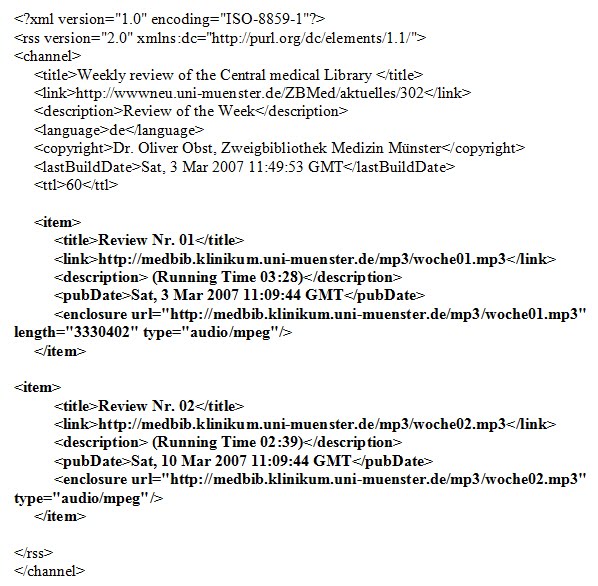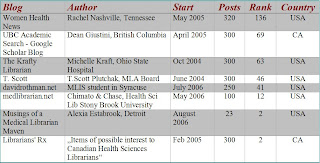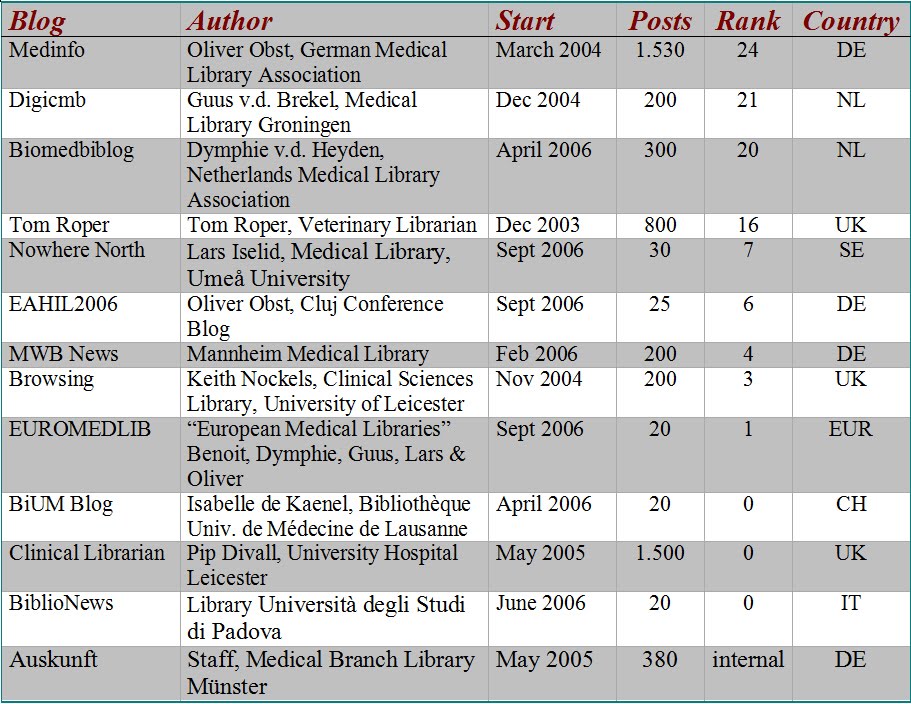
Contrary to the statements I made in the last issue, I’m now – slightly – optimistic that Twitter makes sense. In the meantime, I have 160 followers on twitter.com/obsto, 43 on twitter.com/zbmed (unfortunately not any library user, I’ll come back to this later) and 26 on my private account. The number of your followers is the unerring impact factor of Twitter – 160 is not that much, the vanities in the library twittersphere (@librarycongress, @nypl) do have some thousands followers and real celebrities such as @google or @kevinrose run in the hundreds of thousands if not millions of followers.
The number of my postings in Twitter (remember, they’re called “tweets” or “updates”) grew to almost 400. Do not be under the impression that I have stopped working for my library – This was all done within the blink of an eye. To write your message in 140 characters or less is not as easy as it sounds, but you get accustomed and after some weeks it is far quicker and more convenient than to blog or write emails. In addition, with twitterfeed.com, I redirected my whole weblog postings to twitter – and I had nothing to do at all.
Don’t get confused
The only thing you have to keep in mind is, where you write what and to which source it will be redirected. That of course is true for the Web 2.0 in general: The tools are easy and straight forward, but if you redirect and forward your posts via Mashups to other social cites, it will get far more complicated. For example: do you write a wordpress blog? The plugin “Twitter Tools” [1] will post your blog entries automatically to your Twitter account. So far, so good. But Twitter Tools allows also the other way around: it will post your Tweets in the blog! Now beware: if you activate both options by mistake, both tools will run amok and pass on the entries to each other in eternity. Due to be networked/mashable character of the Web 2.0 this may happen with every tool. It is easy to lose track of the many Web2.0 sites, which you are using.
Is Twitter essential?
Twitter is certainly an important way to stay current on a lot of topics. Experts are twittering in many fields and can be followed. By selecting the people you’re following and by grouping them you can optimize your information gathering scheme. To follow too many people can be quite a hassle, so keep it small and simple. RSS makes looking for information far more comfortable, but maybe that’s because I’m already accustomed to it and follow only a hand-graded few resources.
On the other hand, Twitter is perfectly suited for libraries to get the news out. As I told before, its shortness and quickness aid the whole process of information pushing. And it’s a great advantage that you know your audience (your followers) by name.
Who follows you?
If I take a closer look on the 43 people who are following our library on Twitter, I have to confess that actually no-one is a user of our library. Guessing at the attitude of our students and doctors (I could easily perform a survey but I’m anxious), only 1% are using Twitter right away. It’s very much the same with RSS – nobody knows and nobody cares. Either the library is years ahead in using modern technology/Web2.0 or we are simply doing the wrong thing at the wrong time…
Nevertheless, the single most important parameter for successful twittering is to get your clients to follow you. Anne from the University of Hamburg [2] tells us, how this could be achieved:
- Identify a few Alpha Twitterers and made them to follow you.
- Look who is on the Web2.0-train; among science bloggers there are certainly many Twitterers.
- Announce your Twitter activities on your website, which usually attracts followers.
- To follow someone can be useful if you know him personally or he twitters on your library or you had responded to a tweet of his/her (actually most Twitterers are female – not surprisingly 😉 ).
- You can even turn into conversations; for instance if something is asked, and you as a library knows the answer, then just answer it.
- Take a look at your neighbourhood (see below).
Twitter Tools
How do you find fellow twitters in your neighbourhood? I was too lazy to look up Google and struggle through the results, so I simply twittered this question. Not surprisingly, I received hand-chosen results within minutes: One recommended nearbytweets.com, the other tweetmondo.com (but beware, they will tweet for you!). The third one works best for me: search.twitter.com (search with “near:Münster within:15km”) is great and seemingly quite customizable. Today I joined the group “Münster” at twittgroups.com, which organizes Twitter-like groups for universities and cities.
If you are too busy for Twitter or subscribe to hundreds of people, Twitter for busy people [3] lets us keep the persons, which you are following, quite organized.
1. http://alexking.org/projects/wordpress
2. http://log.netbib.de/archives/2009/06/23/bibliotheks-gewitscher-zum-erfolg-bringen/
3. http://www.twitterforbusypeople.com/index.html














